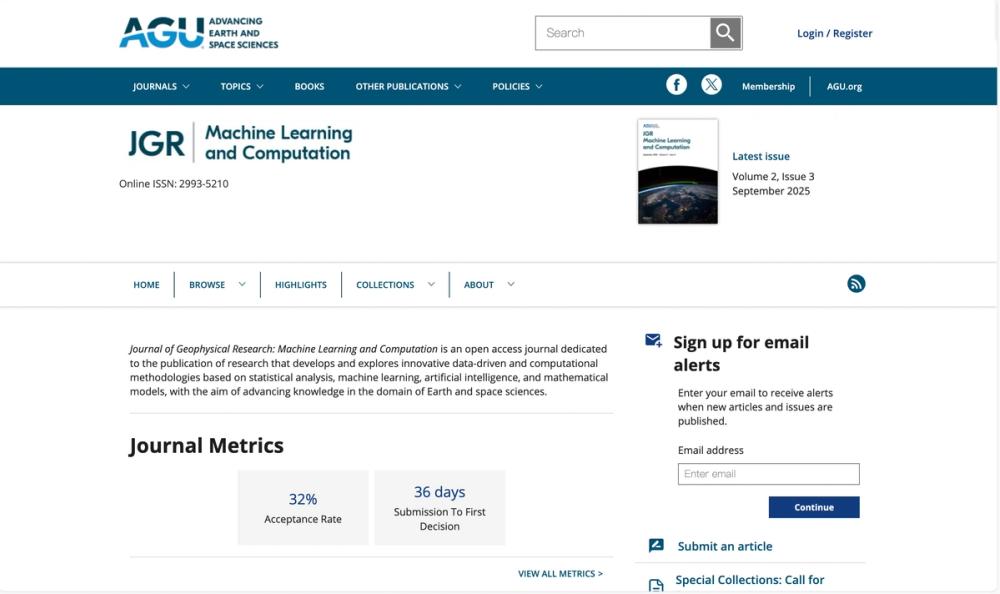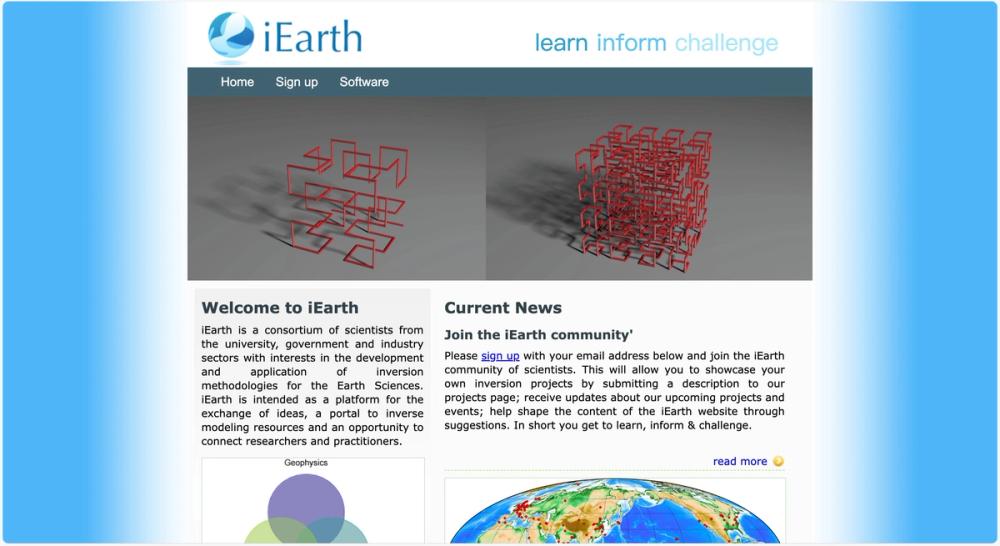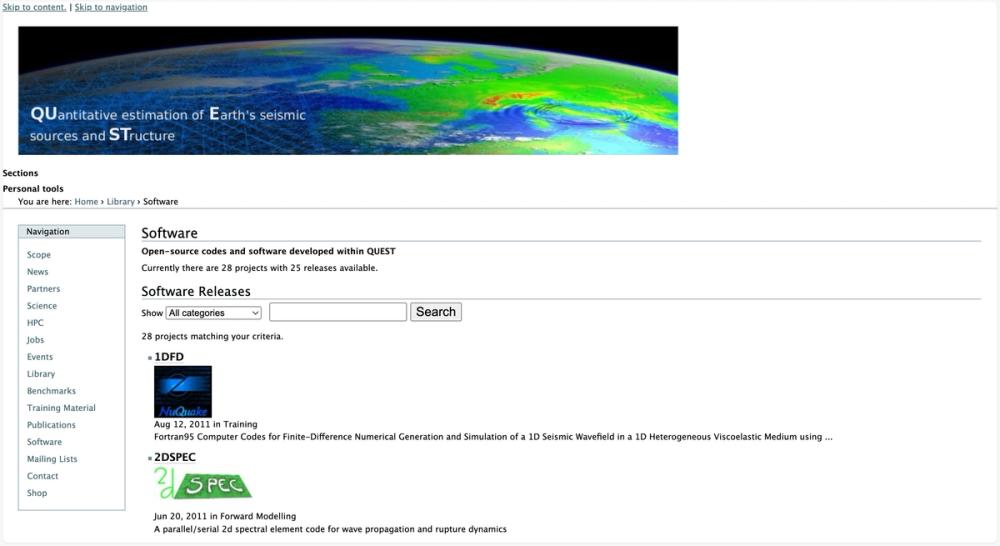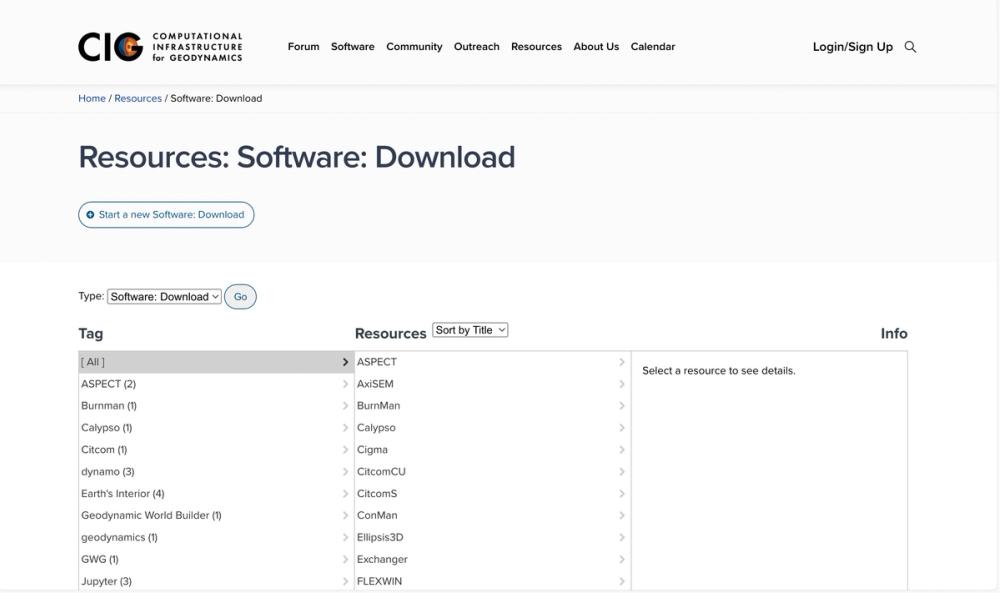Name: Journal of Geophysical Research: Machine Learning and Computation
Link: agupubs.onlinelibrary.wiley.com/journal/29935210
Description: An open-access AGU journal publishing research that advances Earth and space sciences through innovative data-driven and computational methods, including machine learning and AI.
Key Words: machine learning, artificial intelligence, data-driven methods, computational methodologies, geosciences, open access, statistical analysis, Earth sciences, space physics
Introduction:
The Journal of Geophysical Research: Machine Learning and Computation (JGR: MLC), launched in December 2023 by the American Geophysical Union (AGU), is a pioneering open-access journal dedicated to advancing knowledge in Earth and space sciences through innovative data-driven and computational methodologies. Edited by Dr. Enrico Camporeale, a research scientist at Queen Mary University of London and the University of Colorado, Boulder, the journal addresses the growing demand for a specialized platform to publish research that leverages machine learning (ML), artificial intelligence (AI), statistical analysis, and mathematical models to tackle complex geophysical questions. It fills a critical gap in the scientific publishing landscape by focusing on novel methodological developments that drive breakthroughs in geosciences, rather than treating ML and AI as supplementary tools.
The journal welcomes submissions across a broad spectrum of geoscience disciplines, including solar and space physics, geophysical fluids and planetary environments, Earth surface and interiors, geochemistry, and biogeosciences. It emphasizes research that develops or refines computational techniques—such as neural networks, physics-informed ML, and Bayesian inversion—to address challenges like ill-conditioned geophysical problems, seismic data analysis, or climate modeling. For example, published works include studies on physics-informed neural networks for crustal deformation modeling, iterative quantum annealing for geophysical inverse problems, and ML-based forecasting of internal tides, showcasing the journal’s commitment to cutting-edge, trans-disciplinary approaches.
As an open-access journal, JGR: MLC ensures that all accepted articles are freely available under Creative Commons licenses (e.g., CC BY), promoting accessibility and reproducibility. Authors pay an article publication charge (APC) of $2,500 USD / £2,080 GBP / €2,400 EUR, with waivers available for select article types (e.g., editorials, commentaries) and automatic discounts for corresponding authors from institutions in eligible countries. The journal encourages submissions that balance methodological innovation with clear scientific outcomes, requiring authors to provide detailed descriptions of novel methods and their applications to ensure reproducibility and accessibility for a broad readership.
JGR: MLC emerged in response to the rapid growth of ML and AI applications in geosciences, evidenced by over 500 manuscripts and 1,700 abstracts with ML/AI themes submitted to AGU journals and meetings in 2022. The journal aims to consolidate such research, previously scattered across various publications, to foster cross-disciplinary collaboration and prevent fragmentation of knowledge. It encourages papers that not only address specific geophysical problems but also propose transferable methodologies, such as transformer-based frameworks for multimodal geophysical inversion or neural networks for rock property estimation. By prioritizing result reproducibility and alignment with AGU’s ethical guidelines, JGR: MLC positions itself as an intellectual hub for the data science revolution in geosciences, inviting researchers to shape the future of computational discovery in Earth and space sciences.




